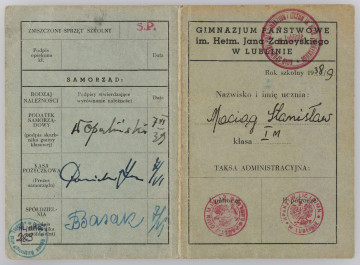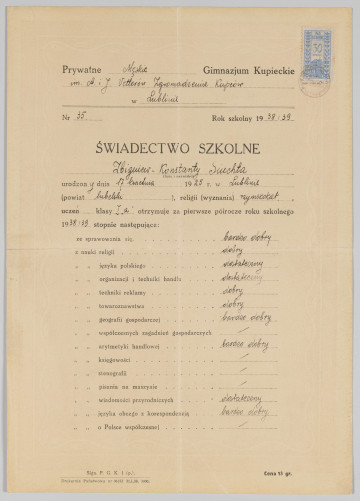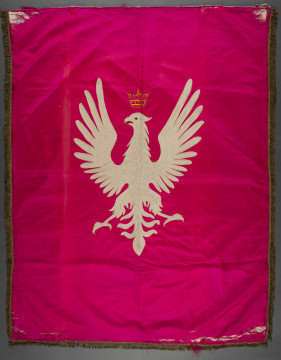
Membership fee payment cards of the Parent Circle at the State Secondary School of Hetman Jan Zamoyski in Lublin
1938 — 1939
National Museum in Lublin
Part of the collection: Memorabilia related to education and scouting in Lublin 1918–1944
The unification and dissemination of education were some of the most significant challenges facing the Second Republic. Education was not only a civilisational requirement but also an essential element in building national identity. The idea of universal education emerged as early as the 18th century. As the concept of the nation as a community based on language, culture, and history took shape, more and more people became convinced that universal education was essential for building a modern society. Compulsory schooling and free access to primary education were guaranteed by the March Constitution of 1921.
In 1932, school reform was passed; it was named the Jędrzejewicz reform after the then-Minister of Education Janusz Jędrzejewicz. It unified the school system in the entire Republic of Poland, linked secondary education with general education, and created the legal framework for vocational education. A seven-year universal school was maintained, but three types of such schools were distinguished: four-class, six-class and seven-class. The schools differed in the scope of the discussed material. Education lasted seven years. After completing the sixth form, a student could enter a four-year gymnasium, and then a two-year high school. He could also choose the path of four-year vocational grammar schools and three-year vocational high schools.
The history of the Vetter School dates to 1866 when the Merchant Guild of the City of Lublin established the Sunday Trade School for merchant apprentices from the city of Lublin. After much effort, it was launched on 5 August 1866 as a four-grade school. Since 1902, there was also a daytime seven-grade School of Trade of the Merchant Guild of Lublin. The brothers August and Juliusz Vetter were generous donors and served as chairmen of the Welfare Council for many years.
Author / creator
Dimensions
cały obiekt: height: 7,4 cm, width: 10,4 cm
Object type
document
Technique
manual script
Material
paper, ink, feather, ink, photographic print paper
Creation time / dating
Creation / finding place
Owner
The National Museum in Lublin
Identification number
Location / status

1938 — 1939
National Museum in Lublin

1938
National Museum in Lublin

1939
National Museum in Lublin
DISCOVER this TOPIC
Castle Museum in Łańcut
DISCOVER this PATH
Educational path